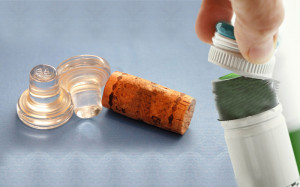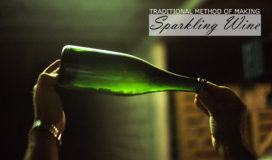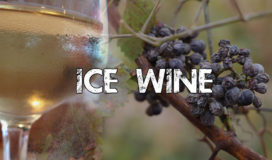
The battle is on between what is better to seal wine bottles. Is it the CORK, the so-called matriarch of winedom, or the SCREW CAP, the aluminum squadron?
Screw caps were invented when “bad bottles” started to pop up. A bad bottle is a bottle of wine contaminated with Trichloroanisole (TCA). This is a chemical composite that conveys itself as an imperfection in the wine. Contaminated wines are sometimes referred to as corkiness, corked, or cork taint. It has been said that if a wine is infected it may taste stale and dirty.
TCA normally finds its way through the natural cork pores. That vulnerable covering was the origin for aluminum-based and airtight screw cap cover.
To give us better understanding on the issue, here are some facts about TCA that Just Wines gathered from the wineinstitute.org article entitled “Trichloroanisole (TCA) Fact Sheet
- Trichloroanisole (TCA) is the natural compound that at higher levels can impart "musty" flavors and aromas to wines, other beverages and foods. Wines that contain TCA at a detectable level are described as either being "corked" or having ‘corkiness.
- Cork is a major source of TCA in bottled wine, although experts indicate that TCA in wine may be derived from sources other than cork, such as from barrels or other sources of wood.
- TCA does not pose a health risk to consumers. There are no government agencies in any part of the world that have sought to regulate TCA levels in wine.
- Wineries in most wine-producing countries, along with the cork industry, continue their research efforts to minimize the presence of TCA in wine. These efforts are under continuous review by the Wine Institute's Technical Committee.
- The sensory threshold for TCA of a few individuals can be measured in the parts per trillion. There is no conclusive evidence that wines that exceed any one particular level of TCA will result in detectable negative taste characteristics for any significant portion of the wine-drinking population. Many award-winning wines contain levels of TCA that are detectable by instruments but not by consumers. Therefore, there is no single, fixed level of TCA that distinguishes a "good" wine from ‘bad
- TCA analyses from a reputable laboratory provide the industry with valuable quality control data. Such data are one of the many tools available to today's winemaker, but cannot, and should not, be a substitute for consumer sensory judgment.
- Perception of TCA by consumers is governed by many variables, including alcohol content, wine characteristics, and the sensitivity of the consumer. The consumer threshold of perception of TCA varies dramatically according to experience and inherited genetic capabilities. The research literature indicates that the existence of minute traces of TCA in award-winning wines does not impair product quality.(http://www.wineinstitute.org/initiatives/issuesandpolicy/tca)
In truth, there is no faultless wine covering. However, makers of screw caps, corks, and other cap substitutes continue to study methods on how to improve the durability, reliability, and quality of their products. Up till then, the rivalry goes on and the victor is yet to be known.













